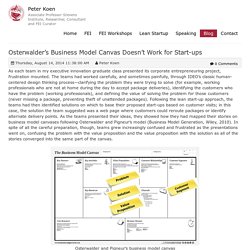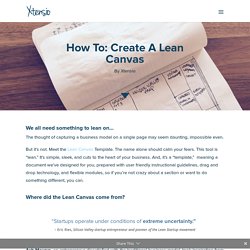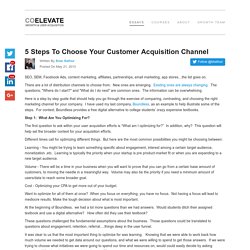

Business model innovation in consumer goods companies. Executive summary: The Business Model Coherence Premium Today, businesses should consider changing more frequently and in more fundamental ways.

As noted in our recent study Consumer product trends: Navigating 2020, consumer goods (CG) companies and retailers face a confluence of rapidly evolving technologies, consumer demographic shifts, changing consumer preferences, and economic uncertainty. Left unaddressed, these trends have the potential to not only undermine historical sources of profitable growth but also render traditional consumer goods business models obsolete.
By now, top management teams have almost universally embraced the notion that their companies must innovate, not only at the level of products and services, but at the level of business models. Rethinking the fundamentals of how a business creates, delivers, and captures value wasn’t a priority in an era of slow change and stable markets, but in a time of rapid change and disruption, it now must be. Customer Solutions. Your ultimate guide to Minimum Viable Product (+great examples) Follow @davidtsalani This Minimum Viable Product guide will be useful if you want to build a web product your early adopters will love.

In addition to that, it is packed with definitions, strategies and great MVP examples. How do you build your MVP? What are Concierge, Wizard of Oz and Piecemeal MVPs? What’s the difference between low-fidelity and high-fidelity Minimum Viable Products? I have divided it into two parts to make it easier for you. Gorillaventures. Your ultimate guide to Minimum Viable Product (+great examples) Canvanizer. Front End Innovation - Osterwalder’s Business Model Canvas Doesn’t Work for Start-ups. As each team in my executive innovation graduate class presented its corporate entrepreneuring project, frustration mounted.

The teams had worked carefully, and sometimes painfully, through IDEO’s classic human-centered design thinking process—clarifying the problem they were trying to solve (for example, working professionals who are not at home during the day to accept package deliveries), identifying the customers who have the problem (working professionals), and defining the value of solving the problem for those customers (never missing a package, preventing theft of unattended packages). Following the lean start-up approach, the teams had then identified solutions on which to base their proposed start-ups based on customer visits; in this case, the solution the team suggested was a web page where customers could reroute packages or identify alternate delivery points. Osterwalder and Pigneur’s business model canvas Maurya’s lean canvas FEI Canvas So which canvas should you use?
How To: Create a Lean Canvas. Put yourself in your customer’s shoes and describe up to 3 problems they face today.

Try to understand their unique needs and challenges. If your consumers have no problems, no frustrations, no longings– this is a problem. It means you have nothing to offer them, and therefore don’t have a business. Problems lead to working business models. Careful! Interview consumers, send surveys, questionnaires, or conduct user-testing for an informed understanding of their “problems.”
A Toolbox For Your Startup. 5 Steps To Choose Your Customer Acquisition Channel. SEO, SEM, Facebook Ads, content marketing, affiliates, partnerships, email marketing, app stores…the list goes on.

There are a lot of distribution channels to choose from. New ones are emerging. Existing ones are always changing. The questions, "Where do I start? " and "What do I do next" are common ones. Here is a step by step guide that should help you go through the exercise of comparing, contrasting, and choosing the right marketing channel for your company. Step 1: What Are You Optimizing For? The first question to ask within your user acquisition efforts is “What am I optimizing for?” Different times call for optimizing different things. Learning - You might be trying to learn something specific about engagement, interest among a certain target audience, monetization ,etc.
Volume - There will be a time in your business when you will want to prove that you can go from a certain base amount of customers, to moving the needle in a meaningful way. Step 2: What are your constraints? 1. Welcome to Forbes. Raise Your Odds of Success — Lean Stack. How To: Create a Lean Canvas.